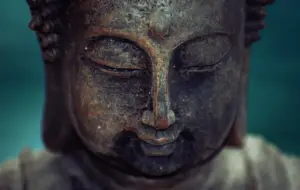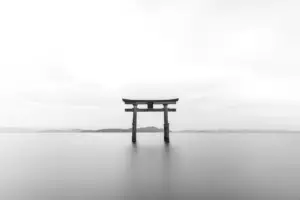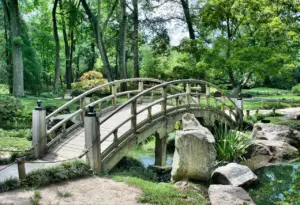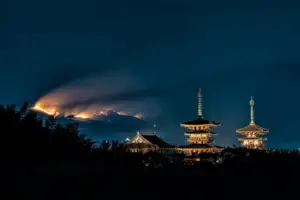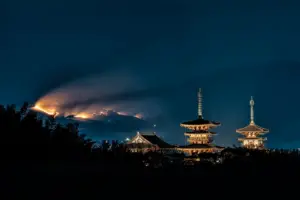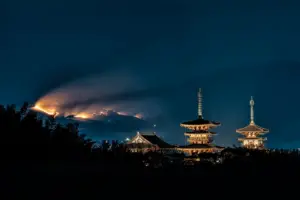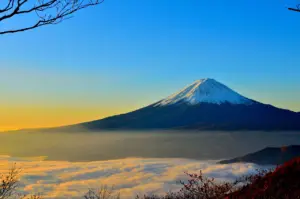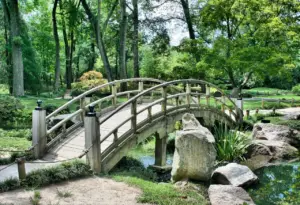If you have ever visited Japan, you may have come across a Shinto shrine or witnessed a Shinto ceremony. Shintoism, the indigenous religion of Japan, is deeply rooted in the country’s history and culture. One of the most distinctive features of Shintoism is its emphasis on rituals and ceremonies.
Rituals and ceremonies are an integral part of Shintoism. They serve as a way to connect with the divine and to express gratitude, respect, and reverence towards the natural world. From purification rituals to offerings and festivals, Shintoism has a rich and diverse array of rituals and ceremonies that reflect its unique worldview.
In this article, we will explore the importance of rituals and ceremonies in Shintoism, their significance, and how they are practiced today.
Key Takeaways
- Shintoism emphasizes on rituals and ceremonies for purification and to bring individuals closer to the kami.
- Nature plays a vital role in Shinto ceremonies and rituals, with the belief that the kami are present in natural objects such as trees, rocks, mountains, and bodies of water.
- Shinto festivals and ceremonies are significant and often associated with changing seasons or important dates, such as the New Year’s Festival (Shogatsu) and the Spring Festival (Haru Matsuri).
- Shinto shrines are carefully designed with simplicity and harmony with nature in mind, and visitors are invited to offer prayers or make offerings at the shrine. The interior typically contains a sacred object representing the presence of the kami.
The Importance of Rituals and Ceremonies in Shintoism
You’ll love the importance of rituals and ceremonies in Shintoism, as they’re a vital part of connecting with the divine and creating a sense of community among believers.
In Shintoism, rituals and ceremonies are not merely symbolic acts or traditions, but they’re considered essential for maintaining a harmonious relationship with the kami, or divine spirits. These practices are believed to help believers purify themselves, express gratitude, seek blessings, and ensure their well-being.
Rituals and ceremonies are also a way to bond and unite with others in the Shinto community. They offer a sense of belonging, solidarity, and shared identity.
For example, festivals or matsuri are public events where people gather to celebrate and honor the kami, often with music, dance, food, and decorations. These occasions are not only an opportunity to show respect and reverence, but they also serve as a way to reinforce social norms, values, and beliefs.
Overall, the importance of rituals and ceremonies in Shintoism reflects the belief that human beings and the natural world are interconnected, and that reverence for the divine is essential for a harmonious and meaningful life.
Purification
Feeling spiritually unclean? Take a dip in a natural spring or river to purify yourself in the traditional Shinto way.
Purification is an essential aspect of Shintoism, as it involves cleansing oneself of impurities and negative energies that may hinder spiritual progress. In Shintoism, purification is performed before entering a shrine or participating in any religious ceremony to show respect to the kami or deities.
To perform the purification ritual, one must first approach the temizuya or purification fountain, where they cleanse their hands and mouth with water. The water is believed to have spiritual cleansing properties and is said to purify the body and soul.
After cleansing, the individual proceeds to the main shrine, where they offer a monetary donation and perform a series of bows and claps to show respect to the kami.
Here are three items that are commonly used during purification rituals in Shintoism:
- Gohei – A wooden wand decorated with white paper strips, used to purify the area and drive away evil spirits.
- Shimenawa – A sacred rope made of rice straw, used to mark the boundary between the sacred and profane areas.
- Haraegushi – A wand decorated with paper streamers, used to sprinkle water on people and objects to purify them.
Purification is an important part of Shintoism and is believed to cleanse the mind, body, and soul. By performing this ritual, individuals can show their respect to the kami and ensure that they are spiritually pure before participating in any religious ceremony.
Offerings
When making offerings in Shinto, it’s important to choose items that are pure and of high quality, such as rice, sake, or salt. These offerings are known as "shintai,"which means the physical manifestation of the kami (the divine spirit or essence). The shintai is believed to be present in the offering, and therefore, it’s important to select items that are of the highest quality and purity.
In Shinto, offerings are made to show respect, gratitude, and to seek blessings from the kami. The act of making an offering is a way to establish a relationship with the kami and to express one’s devotion. Offerings are made at the beginning of ceremonies, such as weddings, festivals, and other important occasions. The table below illustrates some of the common offerings made in Shinto ceremonies, their significance, and the occasions they are typically used for.
| Offering | Significance | Occasion |
|---|---|---|
| Rice | Symbol of life | New Year’s, weddings |
| Sake | Symbol of joy | Festivals, celebrations |
| Salt | Symbol of purity | Weddings, purification ceremonies |
When making offerings in Shinto, it’s important to remember that the intention behind the offering is just as important as the offering itself. The act of making an offering should be done with sincerity, respect, and gratitude. Through the act of offering, one can establish a connection with the kami and strengthen their relationship with the divine.
Festivals and Ceremonies
Festivals and ceremonies play a significant role in the practice of Shinto, providing opportunities for individuals to connect with the kami and express their devotion.
These events are held throughout the year and are often associated with the changing seasons or important dates in the Shinto calendar.
One of the most important Shinto festivals is the New Year’s Festival, or Shogatsu. This festival is celebrated from January 1st to 3rd and is a time for purification and renewal. Many people visit Shinto shrines during this time to pray for good luck and success in the coming year.
Another important festival is the Spring Festival, or Haru Matsuri, which is held in February or March to celebrate the arrival of spring. During this festival, people often visit shrines to pray for good harvests and fertility.
Other festivals throughout the year include the Autumn Festival, or Aki Matsuri, and the Festival of the Dead, or Obon, which is held in August to honor the spirits of ancestors.
Overall, festivals and ceremonies are an integral part of Shinto practice and provide opportunities for individuals to connect with the kami and express their devotion. These events are steeped in tradition and are often associated with the changing seasons or important dates in the Shinto calendar.
By participating in these festivals and ceremonies, individuals can deepen their relationship with the kami and feel a sense of belonging to the larger Shinto community.
Shinto Shrines
When visiting Japan, you’ll undoubtedly come across various Shinto shrines that play a significant role in the religion’s rituals and practices.
There are many different types of Shinto shrines, ranging in size and purpose, from small roadside shrines to grand, elaborate structures.
The layout and structure of these shrines are carefully designed to reflect the unique characteristics of Shintoism and its connection to nature, making them an essential part of the Japanese cultural landscape.
Types of shrines
Shintoism has various types of shrines that serve different purposes and hold different levels of importance. These shrines can be categorized based on their size, location, and the deity or deities they are dedicated to. One of the most common types of shrines is the Jinja, which is a small shrine that can be found in various locations such as homes, businesses, and public spaces. Jinja shrines are usually dedicated to local deities or spirits and are intended for daily worship and offerings.
Another type of Shinto shrine is the Taisha, which is a more significant and grander shrine dedicated to a major deity. These shrines are usually located in remote and sacred areas and are considered to be the most important and powerful shrines in Shintoism. Taisha shrines often have a long history and are associated with historical events or legends. They are also known for their beautiful architecture and intricate designs.
To better understand the different types of Shinto shrines, the following table provides a brief overview of their characteristics:
| Type of Shrine | Characteristics |
|---|---|
| Jinja | Small shrines found in homes, businesses, and public spaces. Dedicated to local deities or spirits. |
| Taisha | Significant and grander shrines dedicated to major deities. Located in remote and sacred areas. Considered the most important and powerful shrines in Shintoism. Associated with historical events or legends. Known for their beautiful architecture and intricate designs. |
The various types of Shinto shrines serve different purposes and hold different levels of importance. Understanding their characteristics can help individuals appreciate the role of shrines in Shintoism and the significance of their rituals and ceremonies.
Structure and layout
Now that you have an understanding of the different types of shrines in Shintoism, let’s take a closer look at their structure and layout.
Shinto shrines are typically constructed with a focus on simplicity and harmony with nature. The entrance to the shrine is marked by a torii gate, which symbolizes the separation between the sacred and the profane.
Beyond the gate, visitors will often find a pathway leading to the main shrine building, which is usually made of unpainted wood with a thatched or tiled roof. The main shrine building is typically surrounded by a courtyard, which may contain additional smaller shrines, gardens, or other elements of natural beauty.
Often, there will be a purification fountain or basin, where visitors can cleanse themselves before approaching the main shrine. The interior of the shrine is typically dimly lit and contains a sacred object, such as a mirror, sword, or jewel, which represents the presence of the kami.
Visitors are invited to offer prayers or make offerings at the shrine, often by tossing a coin into a collection box and clapping their hands to get the attention of the kami. Overall, the simple yet elegant structure and layout of Shinto shrines serve to create a peaceful, contemplative atmosphere that encourages visitors to connect with the divine.
Role in Shinto rituals
Exploring the role of Shinto shrines in connecting individuals to the divine can evoke a sense of awe and wonder in those seeking a spiritual connection. Shinto rituals and ceremonies are an integral part of the religion and are performed to honor the kami, or spirits, that are believed to inhabit natural phenomena, such as mountains, rivers, and trees.
These rituals and ceremonies are meant to purify the individual and bring them closer to the kami, in order to receive their blessings and guidance. Shinto rituals and ceremonies vary depending on the occasion and the shrine, but they typically involve offerings of food, drink, and other objects to the kami, purification rites, and prayers or chants.
These rituals and ceremonies are performed by Shinto priests, who are considered to be intermediaries between the human and divine realms. Shinto shrines are also a place for communal events, such as festivals, where individuals come together to celebrate and honor the kami.
Through these rituals and ceremonies, Shintoism emphasizes the importance of harmony between humans and nature, and the interconnectedness of all things in the world.
The Role of Nature in Shintoism
Nature plays a vital role in Shinto ceremonies and rituals, with its beauty and power celebrated through various practices. Shintoism views nature as a sacred entity, where everything in the natural world has a spirit or kami.
The kami are believed to be present in natural objects such as trees, rocks, mountains, and bodies of water. This belief has led to the incorporation of natural elements in Shinto rituals, where they are worshipped and honored.
In Shintoism, nature is not just seen as a physical entity, but also a spiritual one. The belief in the divine essence of nature is reflected in the rituals and practices that involve purification and offerings to the kami.
For example, in the annual festival of Setsubun, beans are thrown to drive away evil spirits and to purify the space. In another ritual, called Mizugori, people immerse themselves in water to purify themselves before entering a sacred space.
These practices not only honor nature but also demonstrate the importance of purity and cleanliness in Shintoism. Overall, the role of nature in Shintoism reflects the importance of the natural world in Japanese culture and how it is interwoven with spiritual beliefs.
Frequently Asked Questions
What is the origin of Shintoism?
Shintoism is a religion that originated in Japan and has been practiced for thousands of years. The exact origin of Shintoism isn’t clear, but it’s believed to have developed from the indigenous religious practices of ancient Japan.
The religion has always been closely tied to the natural world, with a focus on the worship of natural objects and spirits. Shintoism emphasizes the importance of purity and cleanliness, and this is reflected in the many rituals and ceremonies that are associated with the religion.
These rituals and ceremonies are used to cleanse the body and soul, and to show respect and gratitude to the spirits that are believed to inhabit the natural world. Overall, Shintoism is a fascinating and complex religion that is deeply rooted in Japanese culture.
Are there any specific rules or guidelines for participating in Shinto rituals?
To participate in Shinto rituals, there are certain rules and guidelines that you should be aware of.
Firstly, it’s important to dress appropriately, usually in clean and conservative clothing.
Before entering the shrine, make sure to cleanse your hands and mouth at the purification fountain.
During the ritual, it’s customary to bow twice, clap twice, and bow once more.
Offerings such as coins or prayers can be made at the shrine, and it’s important to be respectful and quiet during the ceremony.
After the ritual, it’s customary to bow once more before leaving the shrine.
It’s also important to remember that Shintoism places a strong emphasis on the harmonious relationship between humans and nature, so it’s important to be mindful of this and show respect for the natural world during the ritual.
How are Shinto festivals and ceremonies celebrated in modern times?
Shinto festivals and ceremonies are celebrated in modern times with great enthusiasm and devotion. These events usually take place at shrines, where people gather to pray, offer donations, and participate in various rituals.
One of the most important festivals is the New Year celebration, which is marked by visits to shrines, purification rituals, and the throwing of beans to drive away evil spirits. Other popular festivals include the Cherry Blossom Festival, the Tanabata Festival, and the Obon Festival, which honors the ancestors.
Many of these celebrations involve parades, traditional dances, and the wearing of colorful costumes. Overall, Shinto festivals and ceremonies are an important part of Japanese culture and continue to be celebrated with great reverence and joy.
What is the significance of the torii gate in Shintoism?
The torii gate is a fundamental symbol in Shintoism, representing the entrance to a sacred space or shrine. It is usually painted in bright red and consists of two pillars connected by a horizontal beam at the top.
The gate is a physical and spiritual threshold, marking the boundary between the secular world and the sacred realm of the gods. Passing through the torii gate signifies the beginning of a spiritual journey and the act of purifying oneself before entering the sacred space.
The torii gate is also considered a symbol of good fortune and protection, and it’s often adorned with wishes and prayers written on wooden plaques called ema.
The torii gate is an essential part of Shinto rituals and ceremonies, and it’s found in almost every Shinto shrine in Japan, serving as a reminder of the enduring importance of tradition and spirituality in modern times.
How do Shinto beliefs and practices influence Japanese culture today?
Today, you’ll learn how Shinto beliefs and practices have influenced Japanese culture.
Shintoism is deeply ingrained in the Japanese way of life, and its influence can be seen in various aspects of Japanese culture. For instance, Shintoism emphasizes respect for nature and ancestors, and this is reflected in the Japanese value for harmony with the environment. Traditional Japanese architecture often incorporates elements of nature, such as gardens and water features.
Many Japanese festivals and ceremonies are rooted in Shintoism, such as the famous cherry blossom festival, which celebrates the beauty of nature. Shintoism also emphasizes the importance of community and social harmony, which is reflected in Japanese social norms and customs.
Overall, Shintoism has had a profound impact on Japanese culture, shaping its values, traditions, and way of life.
Conclusion
Congratulations! You now have a good understanding of the importance of rituals and ceremonies in Shintoism.
The Shinto faith places great emphasis on the use of purification, offerings, and festivals to connect with the divine and to maintain a harmonious relationship with the natural world.
Purification rituals, such as the Misogi, are performed to cleanse the body and the spirit. Offerings, which can be in the form of food, flowers, or other symbolic items, are made to the kami to show respect and gratitude.
Festivals and ceremonies are held throughout the year to honor specific kami and to celebrate important events, such as the changing of the seasons.
Shinto shrines, which are considered to be the dwelling places of the kami, are central to the practice of Shintoism. They serve as places for worship, reflection, and community gatherings.
The natural world is also an important aspect of Shintoism, and many of the rituals and ceremonies are centered around the appreciation and reverence for nature.
By participating in rituals and ceremonies, Shinto followers seek to maintain a strong connection to the divine and to the natural world. It’s through these practices that they hope to live a life of harmony and balance.
So, whether you’re a follower of Shintoism or simply interested in learning more, understanding the importance of rituals and ceremonies in this faith can provide valuable insights into its beliefs and practices.











